Jinmenken: The Definitive Guide to Japan's Eerie Human-Faced Dog
Jinmenken: The Definitive Guide to Japan’s Eerie Human-Faced Dog
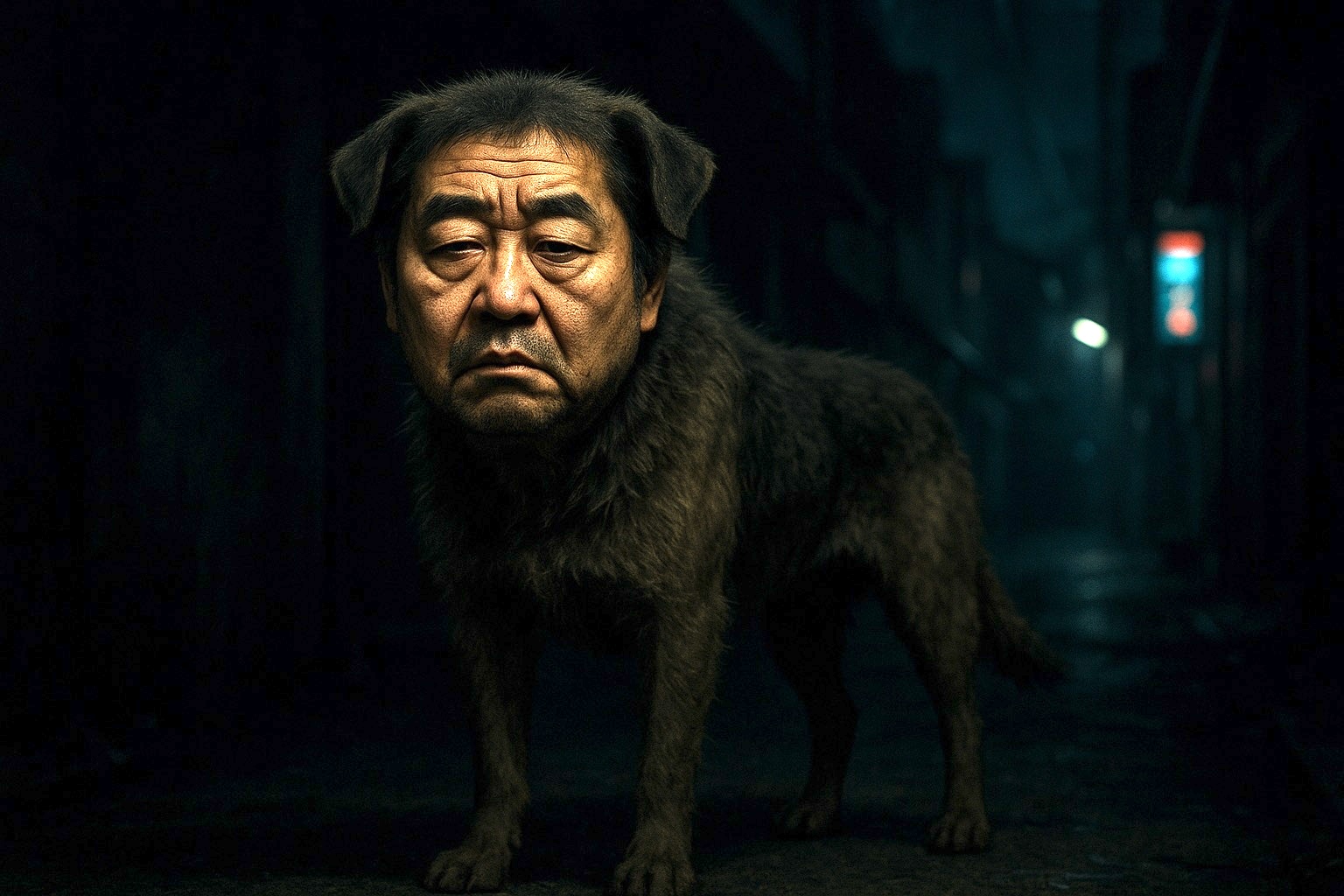
In the late 1980s, a bizarre and unsettling rumor swept across Japan, whispered in schoolyards and sensationalized on television. It spoke of a creature that defied all logic: a dog with the weary, disgruntled face of a middle-aged man. This was the Jinmenken, the Human-Faced Dog, an urban legend that blurred the lines between horror, absurdity, and social commentary.
But the Jinmenken is more than just a modern myth. Its origins are a complex tapestry, weaving together centuries-old folklore, a deliberate media experiment, and the anxieties of a rapidly changing nation. This is the definitive guide to one of Japan’s most iconic and peculiar supernatural entities, from its historical roots to its evolution into a beloved pop culture meme.
Editor’s Note: This deep dive into Jinmenken is part of our central collection, The Definitive Guide to Japanese Urban Legends. Explore the full series to uncover all of Japan’s most terrifying modern myths.
The Two Faces of the Jinmenken Legend
The story of the Jinmenken as we know it today exploded into the public consciousness between 1989 and 1990. The legend primarily took two distinct forms, each catering to a different kind of fear.
1.The Highway Horror: This version tells of a creature of terrifying speed and malice. Late at night, on Japan’s sprawling expressways, drivers would be shocked to see a dog running alongside their car. As they accelerated, the dog would keep pace, eventually overtaking them at speeds exceeding 100 km/h (60 mph). In the brief moment it glanced back, drivers would see not the face of an animal, but that of a human, often leading to a fatal crash.
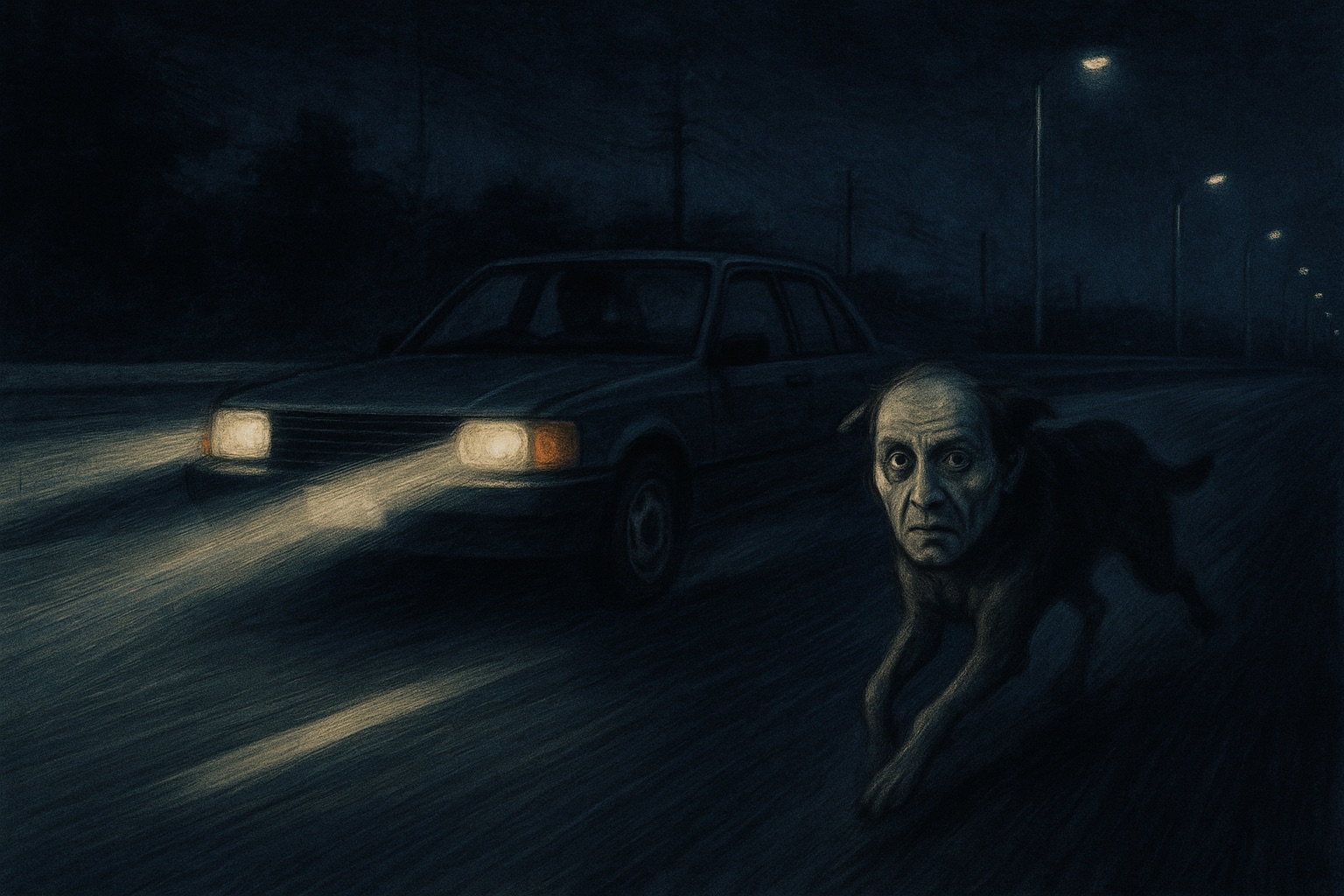
2.The Urban Nuisance: The second, more surreal version, places the Jinmenken in the grimy back alleys of Tokyo. Scavenging through trash cans like a common stray, it would be interrupted by a concerned passerby. But when spoken to, the dog would turn, revealing its human face, and grumble in a gravelly voice, “Hottoite kure” (“Leave me alone”), before trotting away into the darkness.

This bizarre duality—one part terrifying monster, one part world-weary curmudgeon—is key to the Jinmenken’s enduring appeal. It was a story that could be told to evoke screams or laughter, making it incredibly contagious.
A Man-Made Monster? The Deliberate Creation of a Myth
Unlike many urban legends that evolve organically from whispers and rumors, the 1980s Jinmenken boom has a more calculated origin. Evidence suggests it was, in part, a deliberate social experiment orchestrated by media figures and university students.
Japanese writer Motoaki Ishimaru has spoken openly about his role in spreading the rumor to observe how misinformation propagates in society. In one instance, members of a university urban legend club, dressed in lab coats, would approach schoolchildren and ask, “Have you seen a dog with a human face? It escaped from our research facility.” A year later, the rumor was rampant. The iconic line “Leave me alone” was also reportedly an ad-lib, added to give the story a touch of surreal realism.
The legend reached critical mass in September 1989, when it was featured on the popular Fuji TV variety show Paradise GoGo!!. In a pre-internet era, television was the ultimate amplifier. The broadcast transformed the Jinmenken from a local rumor into a nationwide phenomenon overnight, proving how powerfully media could shape and disseminate a modern myth.
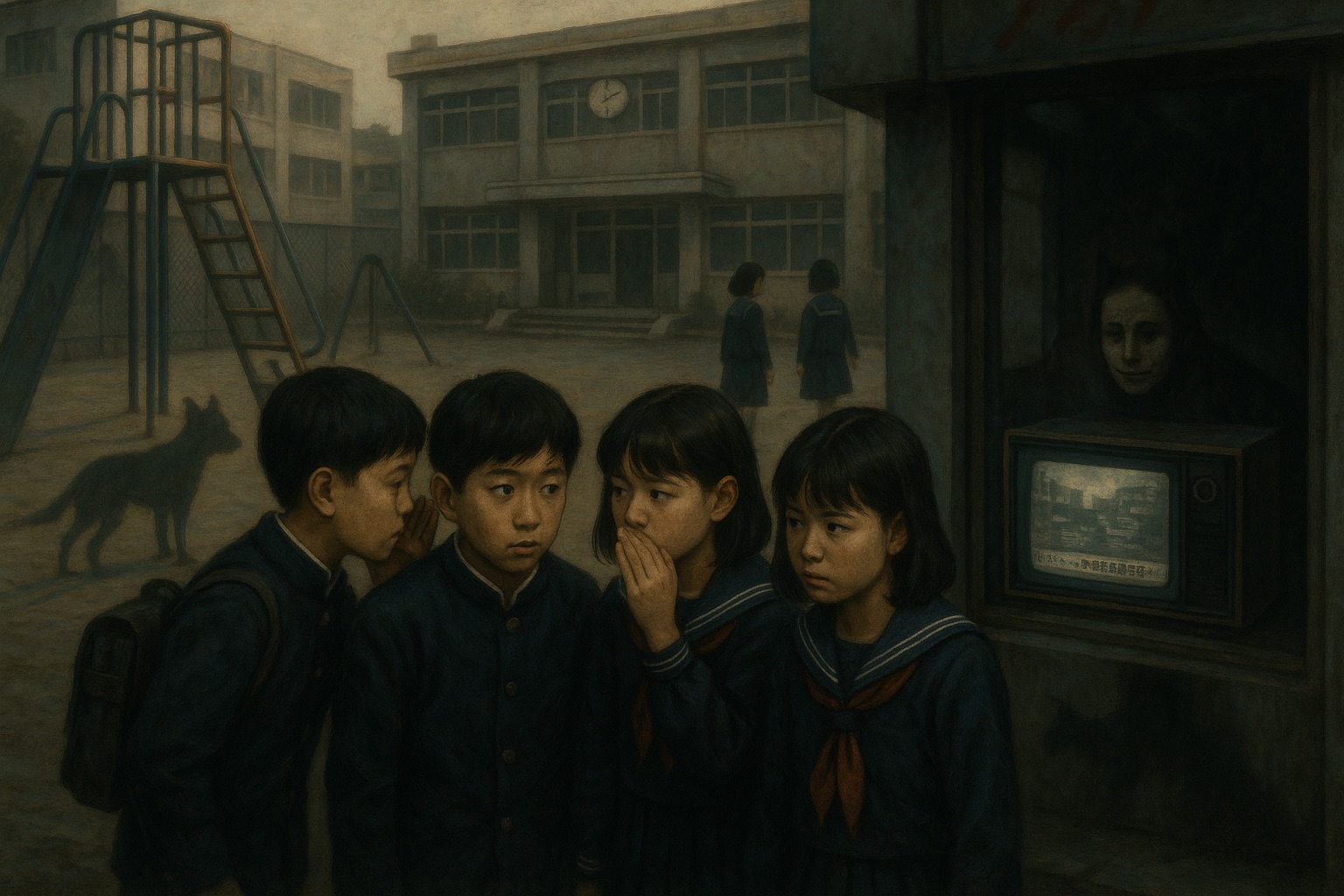
Historical Roots: The Human-Faced Pup of the Edo Period
While the 1980s boom was a modern creation, the concept of a human-faced dog is not. The story has a much older, more mysterious precedent. In a collection of essays titled Mitoshi from the Edo Period (1603-1868), the writer Kato Eibian recorded a strange event from 1819.
He wrote that a puppy with a human face was born in the city of Edo (modern-day Tokyo). The creature was described as having the “face of a monkey” and human-like forelegs. The birth caused a massive stir, with crowds gathering to see the “human-faced pup.” This historical account proves that the core motif of the Jinmenken existed in the Japanese popular imagination long before its modern incarnation. The 1980s legend, therefore, was not created from nothing; it was a modern re-imagining of a pre-existing folkloric concept.
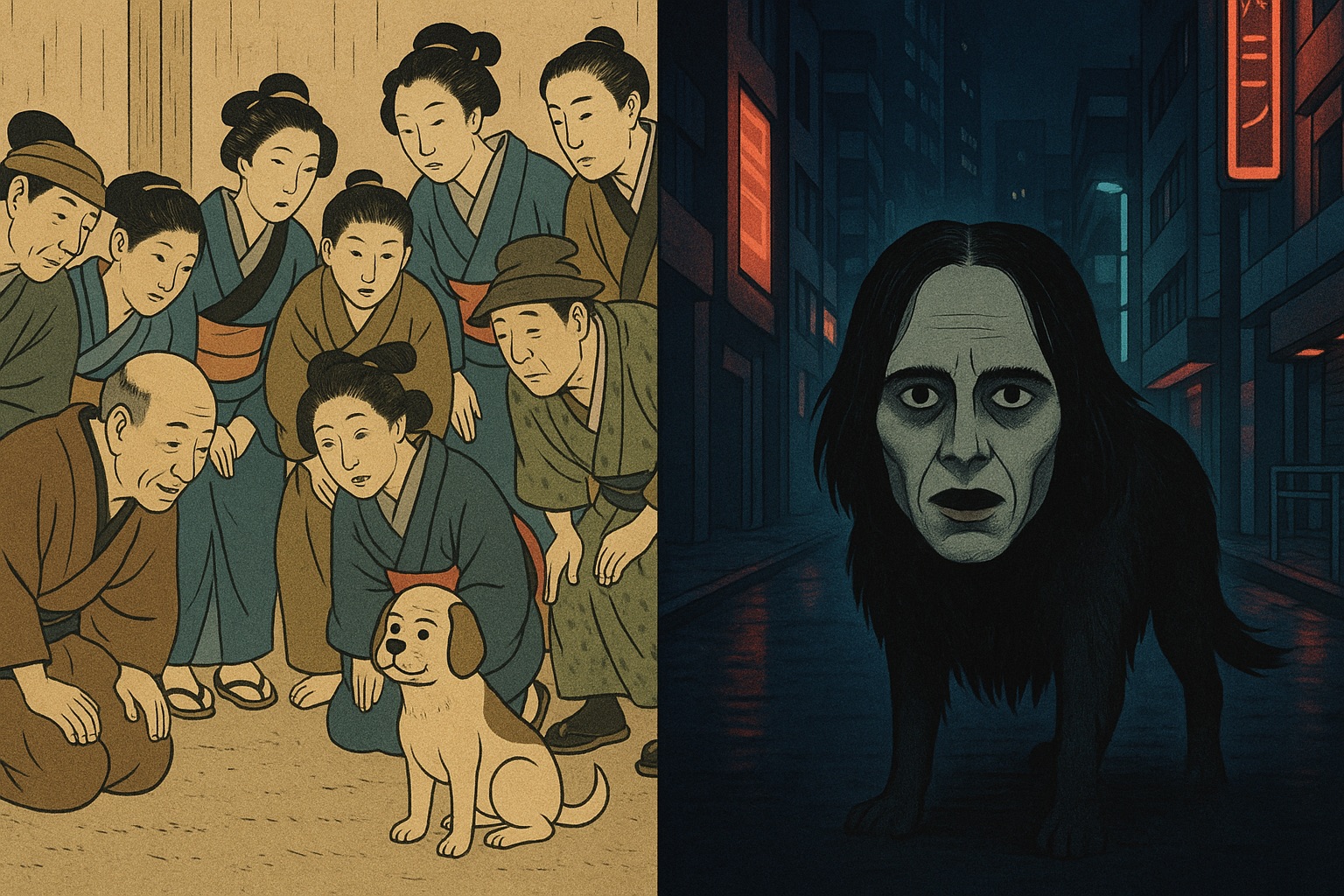
The Meaning Behind the Monster: A Reflection of Societal Anxiety
Why did this bizarre legend resonate so deeply with the Japanese public in the late 1980s? The Jinmenken emerged at a time of profound social change and underlying anxiety. Japan’s “bubble economy” was at its peak, but beneath the surface of prosperity, traditional community ties were fraying due to urbanization and the rise of the nuclear family.
The Jinmenken, a grotesque hybrid of human and animal, became a perfect symbol for these anxieties.
・Civilization vs. The Wild: The human face represents reason, civilization, and society, while the dog’s body represents instinct, wildness, and the animalistic. Their fusion in one creature reflects a fear that the boundaries between the orderly human world and the chaotic natural world were collapsing.
・Urban Fear: The legend tapped into a real-world fear of stray dogs, which were a common sight in Japanese cities at the time. The Jinmenken transformed this mundane fear into a supernatural threat.
・”Leave Me Alone”: The famous catchphrase perfectly encapsulated the feelings of a generation grappling with the pressures of a hyper-competitive society and the anonymity of urban life. It was a sentiment of alienation and a desire for privacy that many could relate to.
In this context, the Jinmenken was more than just a scary story; it was a cultural mirror, reflecting the unspoken fears and frustrations of a nation.
The Jinmenken in Pop Culture: From Horror Icon to Lovable Loser
As the initial panic subsided, the Jinmenken seamlessly transitioned from a terrifying urban legend into a versatile pop culture icon. Its journey through media reveals how a monster can be defanged and domesticated over time.
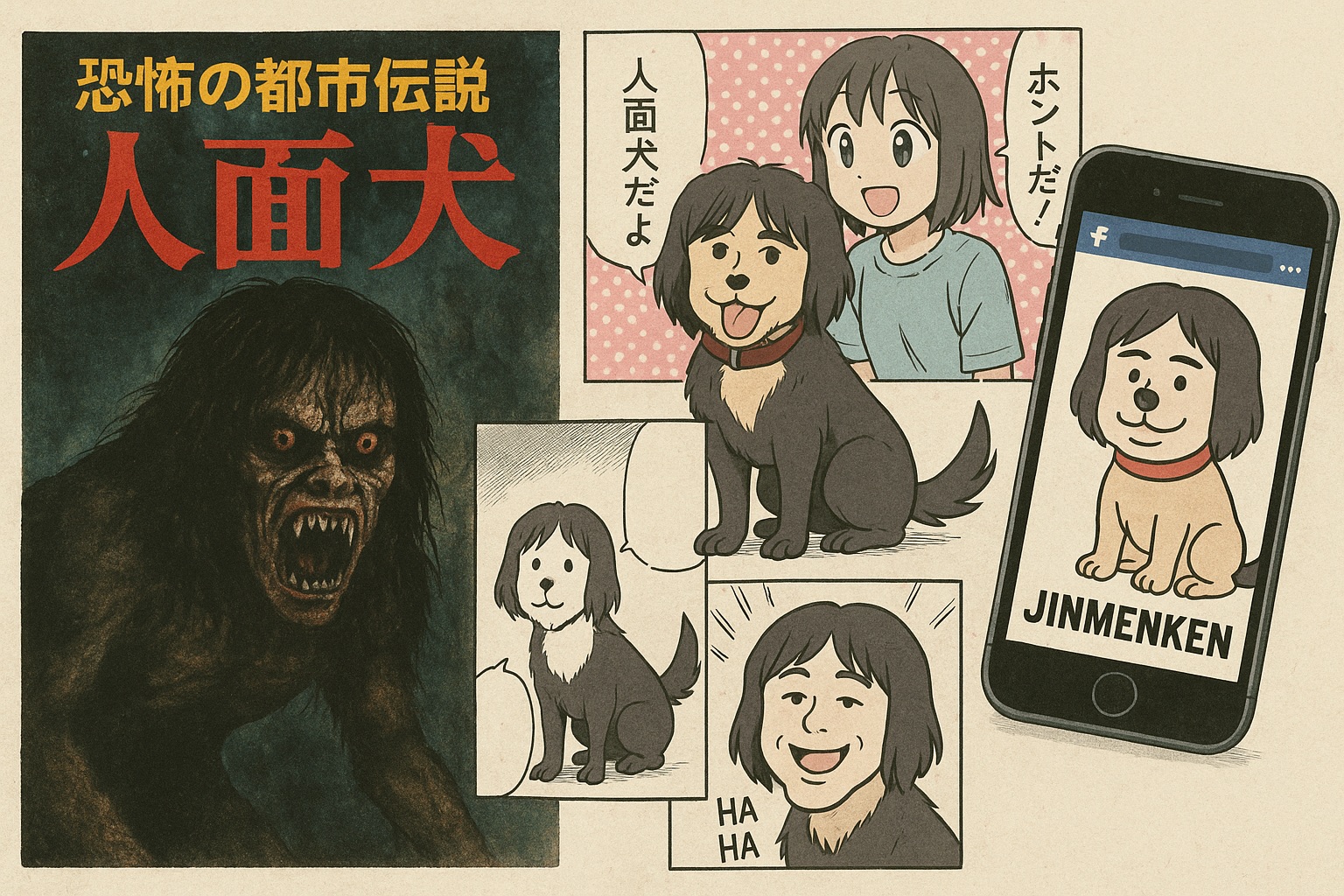
・Early Film Appearances: The legend was quickly immortalized on screen. The horror film The Jinmenken was released in 1990, and the creature also made a memorable appearance in the popular family-friendly horror franchise School Ghost Stories 2 (1996). These films helped solidify its visual image for a mass audience.
・The Yo-kai Watch Phenomenon: The most significant transformation came with the massively popular video game and anime series Yo-kai Watch. The character “Jinmenken” (Manjimutt in the English version) is not a terrifying monster, but a pathetic, middle-aged salaryman who, after being crushed by a steel beam alongside a toy poodle, was reborn as a human-faced dog. He is constantly getting into trouble, being arrested, and lamenting his failed life. This comedic reinterpretation turned the Jinmenken from a figure of fear into a lovable, relatable loser.
・The Digital Age and Memes: In the internet era, the Jinmenken has found new life as a meme. Photos and videos of dogs with uncannily human-like expressions are often shared with the caption, “Found a Jinmenken!” This mirrors the global “Doge” meme phenomenon, where images of dogs are anthropomorphized for comedic effect.
This evolution from a source of genuine fear to a subject of parody and affection demonstrates the remarkable adaptability of urban legends. The Jinmenken has survived by changing its meaning, ensuring its place in Japan’s cultural lexicon for generations to come. It is a testament to the fact that sometimes, the strangest stories are the ones that last the longest.
You might also like…
- → Inunaki Village: Japan’s Most Forbidden Legend and the Hidden History No One Talks About
- → Saru Yume: The Terrifying Japanese Urban Legend That Says Dying in a Dream Means Dying in Real Life
- → Strange Humanoids of Kyoto: Eyewitnesses Report “White Aliens” and a Bizarre Creature from Japanese Folklore
Reference
Wikipedia
walkerplus.com
daily
Other sources include…
The Terror Doesn’t End Here
The chilling tale of Jinmenken is just one piece of a much larger, darker puzzle. Our central hub features in-depth guides to all of Japan’s most iconic modern nightmares.
※ Unauthorized reproduction, video creation, and uploading of this article's content to YouTube, blogs, or other platforms is strictly prohibited.
Related Articles

Hanako-san: The Terrifying Legend of the Japanese Ghost in the Bathroom Stall

Kuchisake-Onna: The Definitive Guide to Japan’s Terrifying Slit-Mouthed Woman

Tsuchinoko: The Definitive Guide to Japan’s Legendary Snake Monster and its $1 Million Bounty

The Ningen of Antarctica: Japan’s Terrifying Urban Legend of a Humanoid Sea Monster
Popular Series
This is the page for Jinmenken: The Definitive Guide to Japan’s Eerie Human-Faced Dog. Find the latest news about Folklore, Cryptid, Yokai, Jinmenken and more on TOCANA - the paranormal news media that stimulates your curiosity
Urban Legends Latest Articles
The Definitive Guide to Japan's Scariest Urban Legends: From Kuchisake-Onna to Kisaragi Station
2025.10.20 23:00 Urban LegendsKunekune: The Definitive Guide to Japan's Terrifying, Twisting Field Monster
2025.10.19 23:00 Urban LegendsNNN Special Broadcast: The Definitive Guide to Japan's Lost, Lethal TV Broadcast
2025.10.14 23:00 Urban Legends






